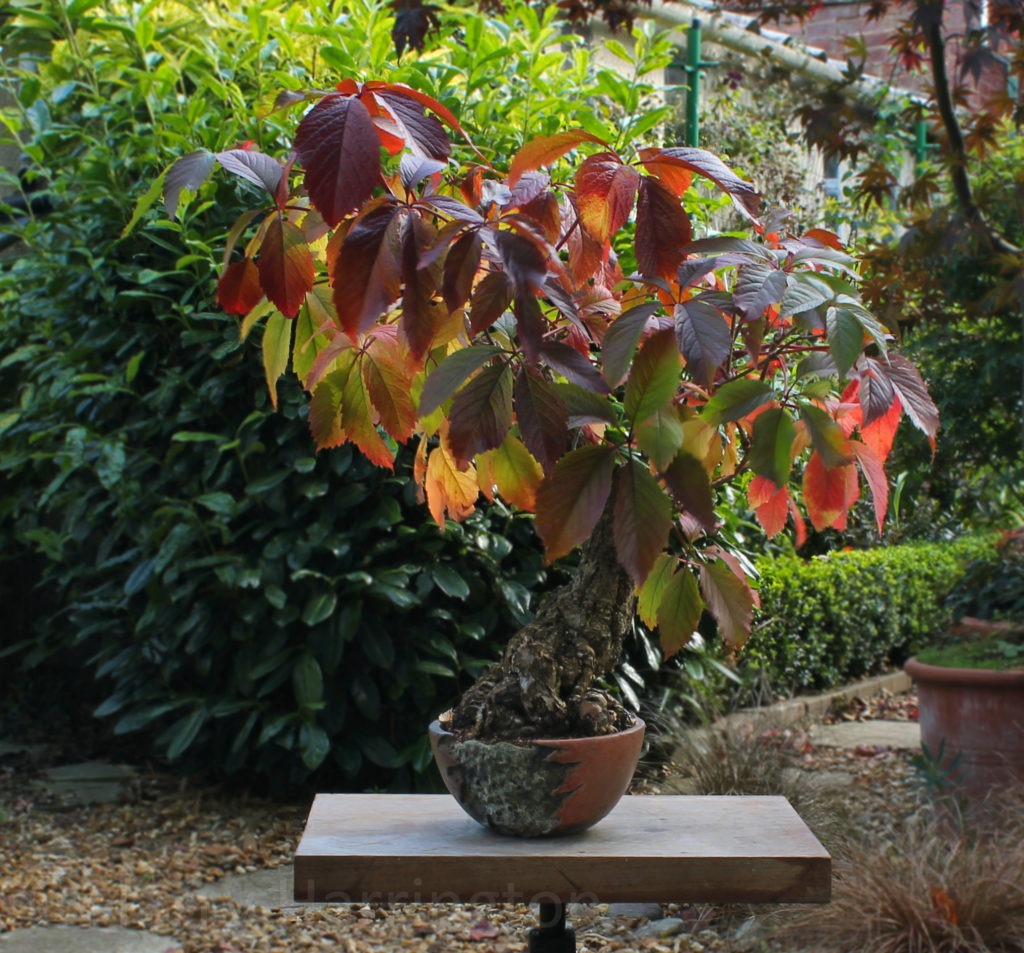
Parthenocissus is a genus of about 10 species of deciduous tendril climbers found in the forests of the Himalayas,E. Asia and North America. Most commonly they cling by tiny disc-like suckers on the end of their tendrils. They are fully hardy and can be grown in sun or partial shade.
Species suitable for bonsai
All species of Parthenocissus are suitable for use as bonsai, most commonly seen are;
Parthenocissus tricuspidata /Boston Ivy.
The Boston Ivy is set apart from the rest of the genus by virtue of having 3-lobed leaves as opposed to the commonly seen 5-lobes. Very vigorous, the Boston Ivy can grow to over 20 metres. Its leaves up to 20cm in length are a bright green through the year turning to a brilliant red/purple in Autumn. Native to China, Korea and Japan where it is referred to as the Japanese Ivy.
Parthenocissus thomsonii
As the Boston Ivy but with 5-lobed leaves up to 10cm in length.
BONSAI CULTIVATION NOTES
POSITION: Full sun but shade in strong midday light.
FEEDING: Every two weeks; if the plant does not receive enough fertiliser the leaves tend to drop before they change colour.
REPOTTING: Every second year though vigorous specimens may require annual repotting.
PRUNING: Prune back hard in the autumn after leaf-drop; continual pruning of new growth, tendrils and damaged leaves required through the spring and summer.
PROPAGATION: Very easy at any time from cuttings and layering.
PESTS AND DISEASES: Relatively trouble free though caterpillars can cause unsightly damage to leaves.
STYLING: Semi-cascade, cascade, root-over-rock, clump styles in medium to large sizes.
OTHER NOTES: Parthenocissus are very soft-wooded so exposed deadwood can rot very quickly unless protected or removed.
WARNING: Parthenocissus tricuspidata/Virginia Creeper can cause severe allergic reactions in some people as it contains ‘Oxalate crystals’, a known skin allergen. Repeated exposure to such plant species can cause sensitisation in some people and lead to ‘allergic dermatitis’ when in contact with P.tricuspidata/Virginia Creeper. In this sense it can have a similar effect on some people to ‘Poison Ivy’.

